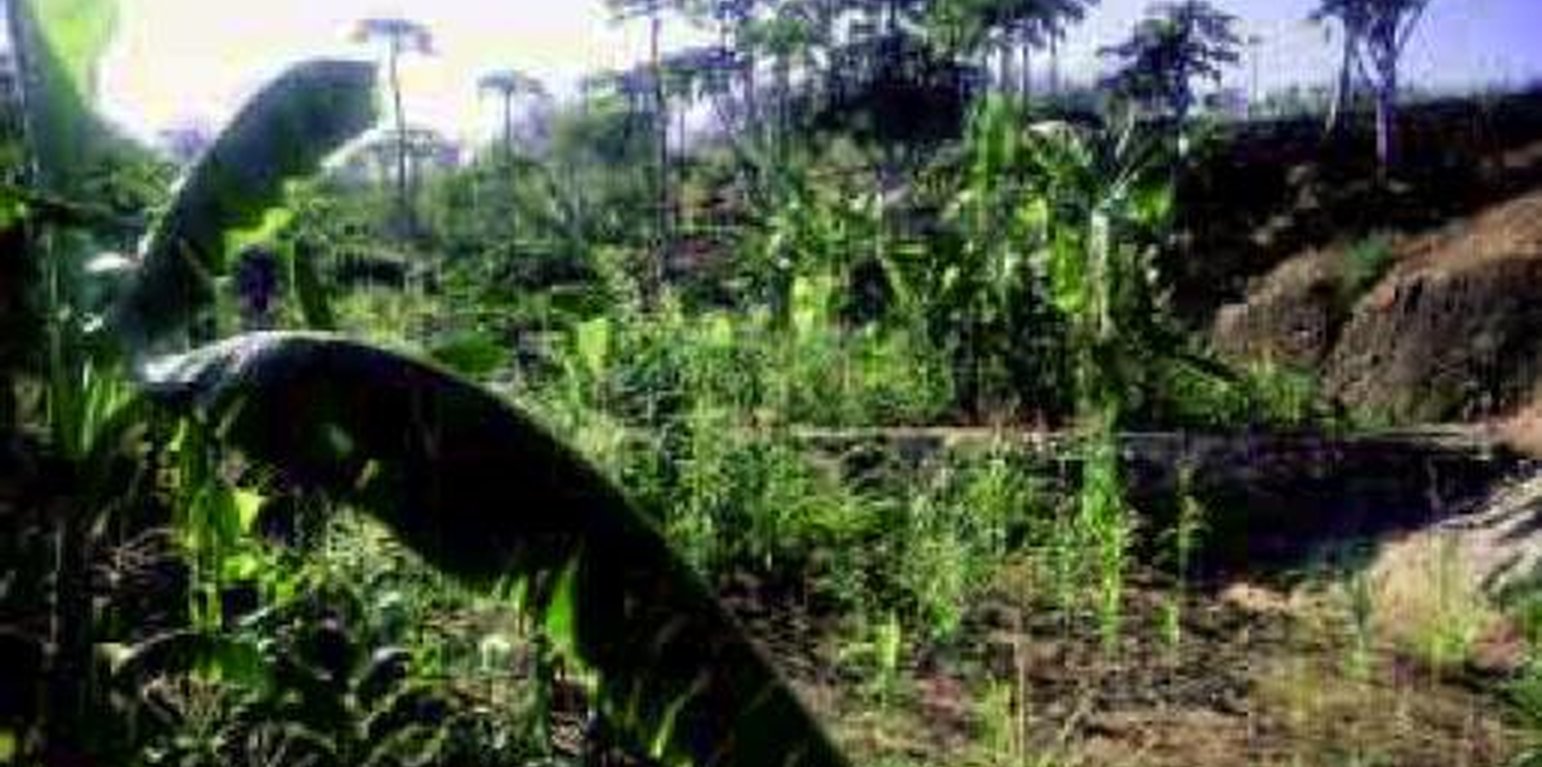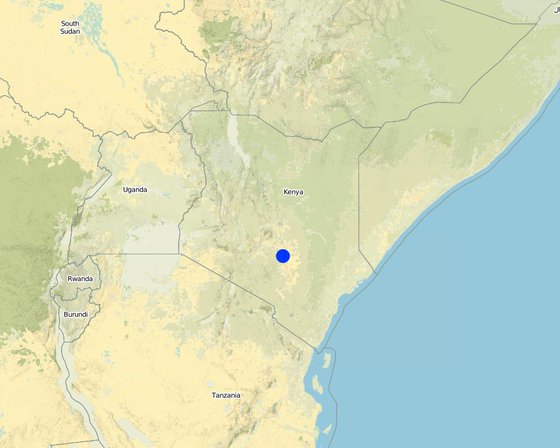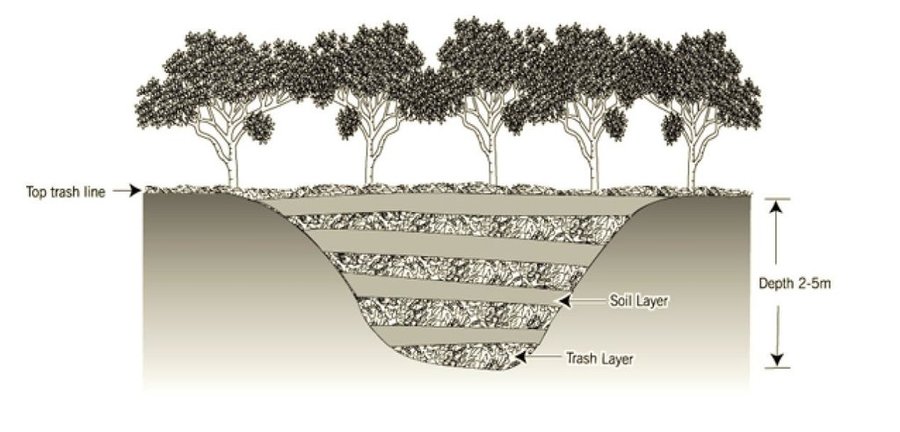



Stone checks are constructed across the gully at horizontal intervals of 10 - 15 m. The check dams vary in size, but are generally 1- 1.5 m high, 1 m wide at the top (base width is greater) and stretch for some 5 - 10 metres across the gully. The checks are flat across the top, except for one end which is lowered to act as a spillway for overflow. As has been pointed out already, these are constructed in stages every rainy season, keeping pace with the rate of siltation. Stone for construction is collected from around the farm. These
checks slow down runoff, encourage sedimentation of organically rich deposits and create a moist and fertile gully bed, suited to crop production. Bananas, pawpaws and annual crops are planted between the stone checks.
Purpose of the Technology: The aim of this technology is to slow down runoff in the gully and harvest the silt. Its purpose is primarily for perennial (and annual) cropping. With respect to
soil and water conservation, impact is achieved through control of concentrated runoff, by retention/ trapping of sediment, by reduction of slope and thereby reclamation of land within a gully.
Establishment / maintenance activities and inputs: Maintenance is a continuous process. There is a regular demand for adding more layers to the check dams as they silt up, and an occasional need to repair broken checks.
Natural / human environment: Mwaniki Mutembei is a young family man, who took the decision some years ago to devote his energies to farming. As he expressed in his interview in the PFI video, he became disillusioned with casual contract labour, and decided to work for himself instead, on his own land. Although he has 4 hectares of farmland, it is situated in one of the driest sub-locations of Migwani, namely Thitani, and the land itself is infertile and shallow. Mwaniki is certainly resource-poor.

Location: Eastern Province, Kenya
No. of Technology sites analysed:
Spread of the Technology: evenly spread over an area (0.04 km²)
In a permanently protected area?:
Date of implementation: more than 50 years ago (traditional)
Type of introduction






bananas and pawpaws
500 square metres
Quantity before SLM: 50
Quantity after SLM: 10
Quantity before SLM: 5.5
Quantity after SLM: 0